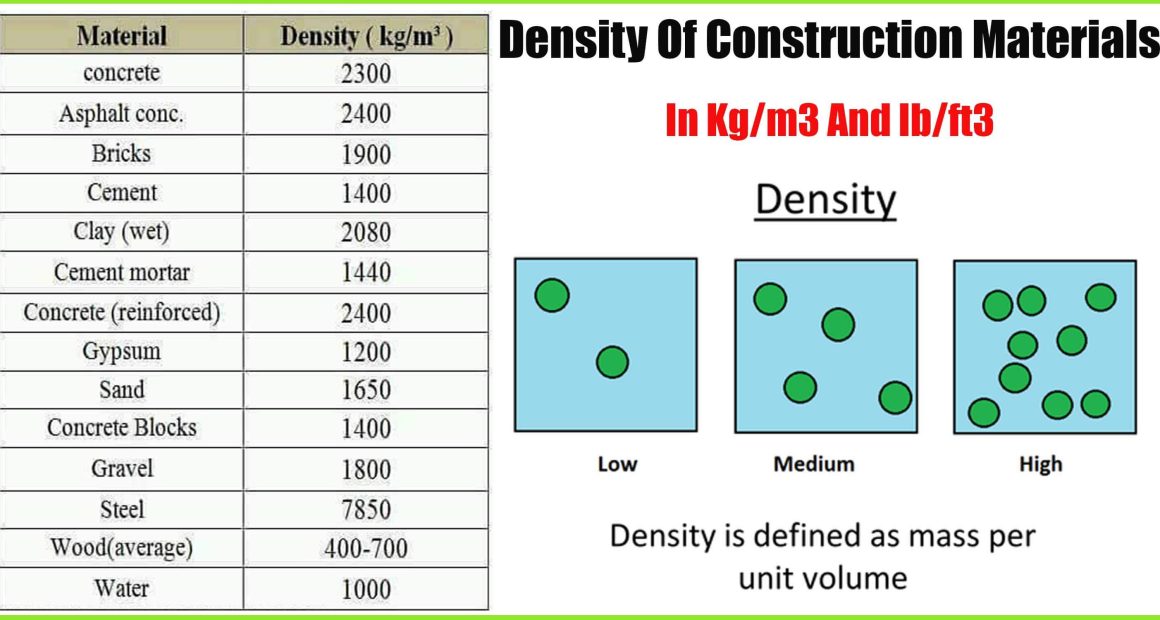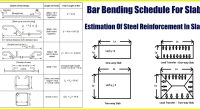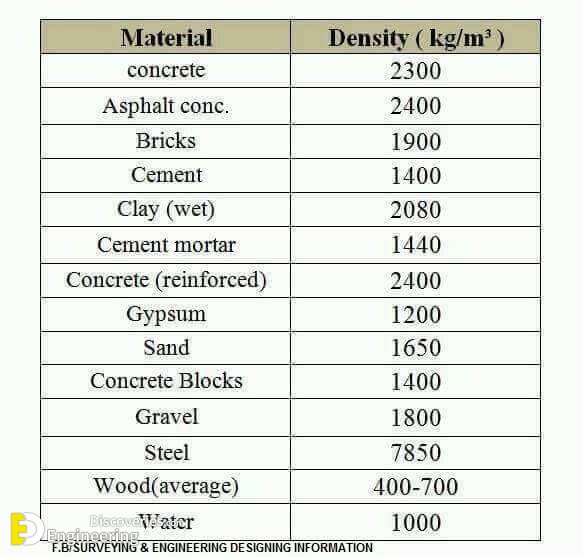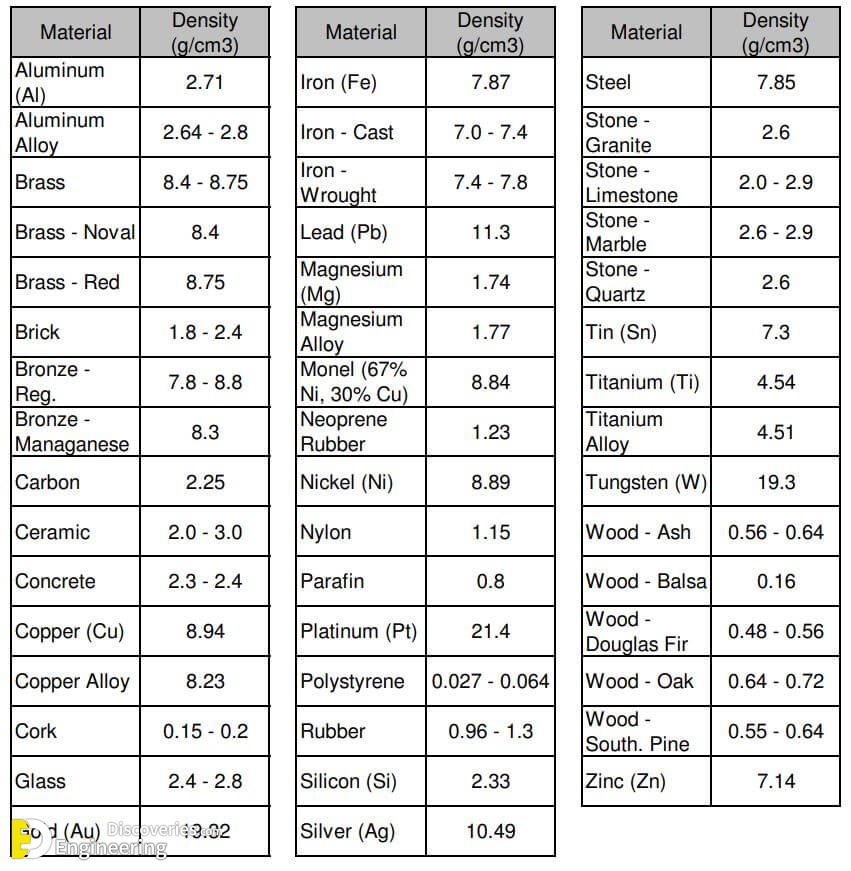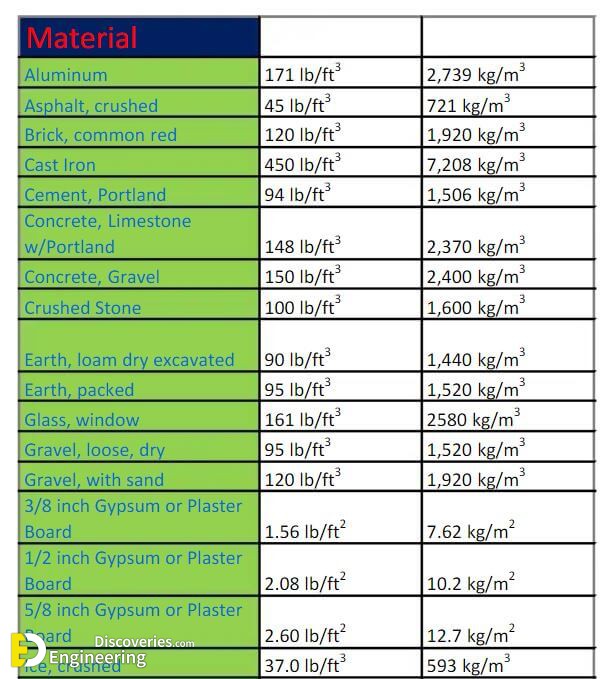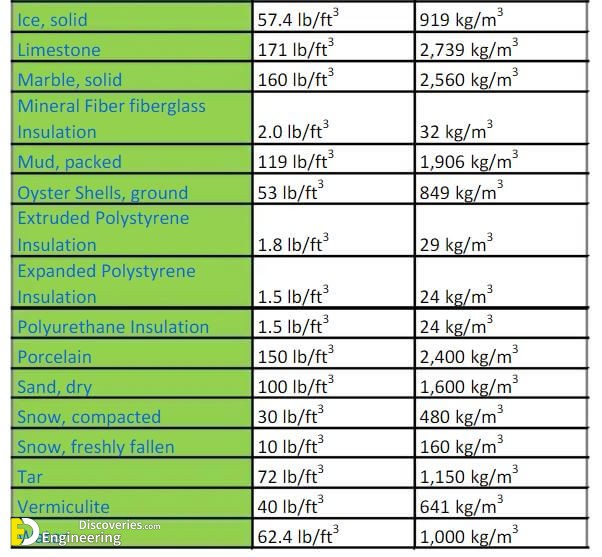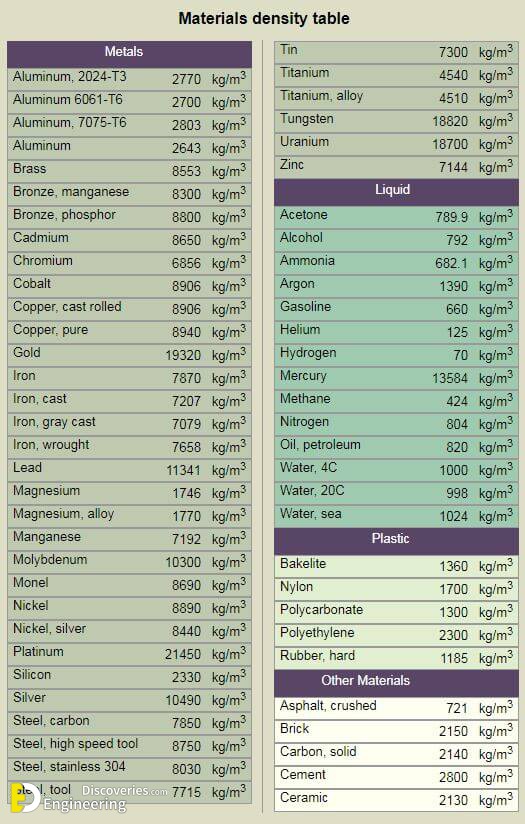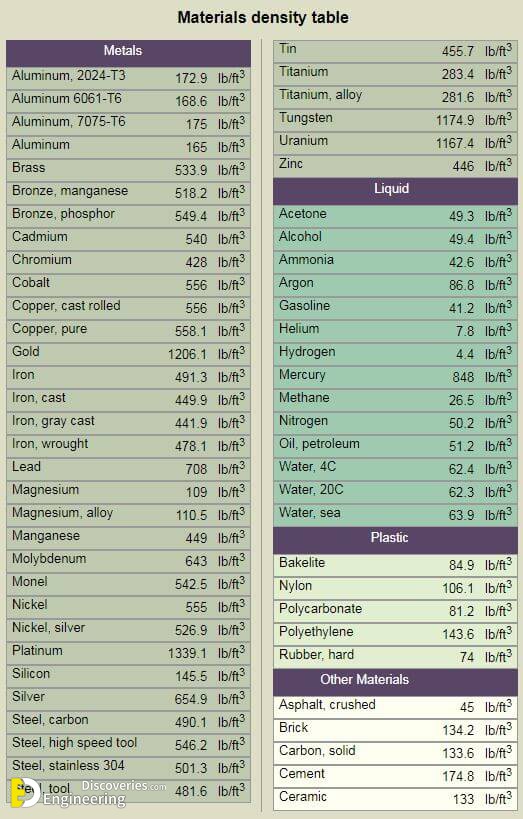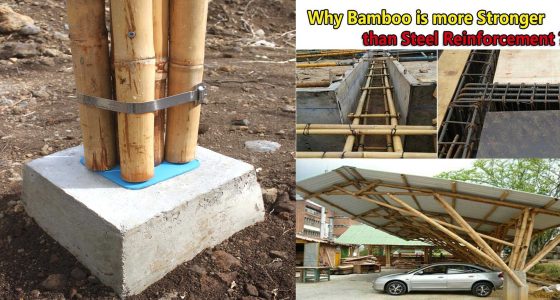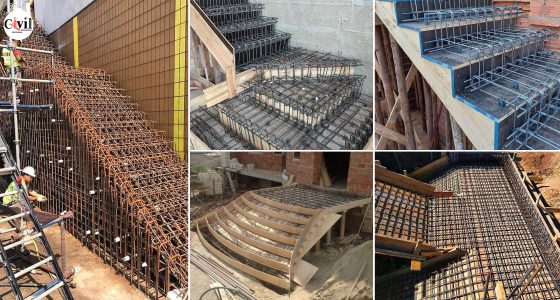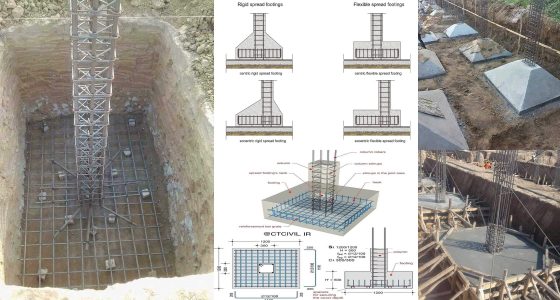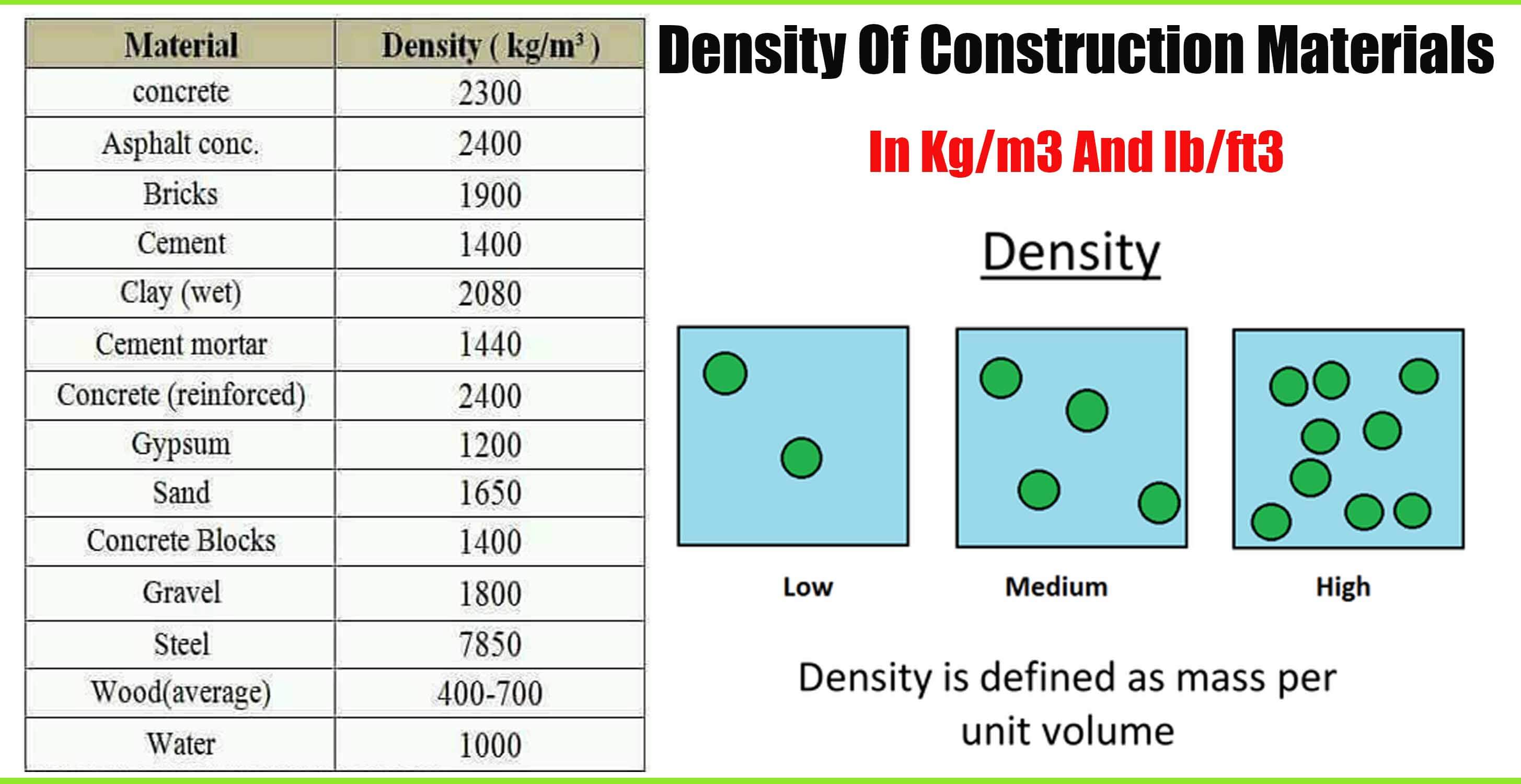
The density of a material is defined as material mass per unit volume and designated by the symbol ρ (rho). The SI unit of density is kg / m3 and U.S. customary unit of density in lb/ft3. Density is an important characteristic property of a material and varies with temperature and pressure. Room temperature density values for some of the common materials including aluminium, steel, bronze, iron, brass, concrete, copper, gold, silver, invar, magnesium, nickel, timber, titanium and zinc are given in the following materials density chart.
Density is defined as the ratio of mass to volume
p = m/v
Units = kg/m3 or lb/ft3
Conversion: 1 kg/m3 = 0.624 lb/ft3
Density Values of Different Construction Materials
If two different materials are the same in weight, but their density of both may be different. Lower dense material occupies more volume than higher dense material. Density also decides the sinking property of the material. It is decided by knowing the density of the liquid. If the material has a lower density than liquid, then it will float on the surface of the liquid. If it is denser than the liquid, it will sink.
For example, water has a density of 1000kg/m3, if we place bamboo wood (350kg/m3) on the water it will float on water surface similarly if we drop a brick (1700 kg.m3) it will sink into the water. The density value of construction material will also help to find out the quantity of material needed for a particular space.
